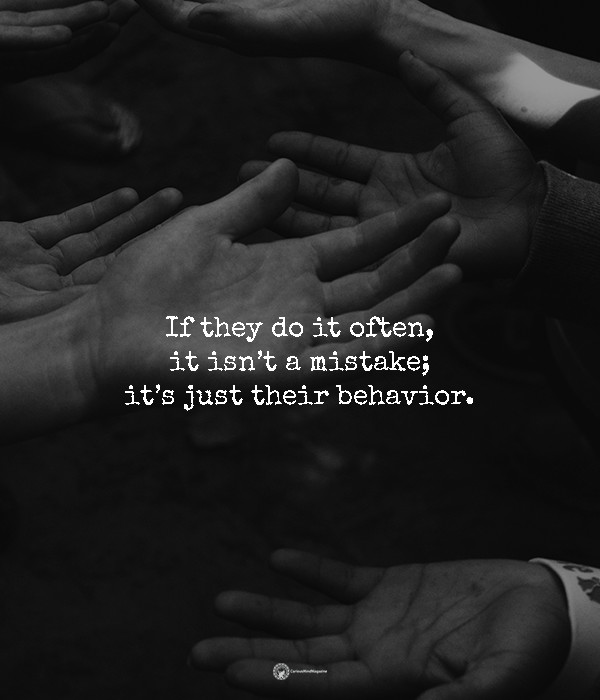Those that have never been in a relationship with an emotional manipulator find it hard to understand how people stay in such a relationship for so long. If someone was mistreating you, they ask: “Why didn’t you just leave?”
For victims of emotional abuse, this can be a quite difficult question to answer. It’s hard for them to tell why they found it so difficult to leave their abusive partner. Why?
Because they weren’t aware that they became ‘addicted’ to their partner through two extremely powerful manipulation techniques – trauma bonding and intermittent reinforcement.
What Is Trauma Bonding?
Trauma bonding is a bond which forms when two individuals go through intense emotional experiences together.
In the case of exploitative relationships, this bond is strengthened as a result of the repetitive cycle of heightened intimacy, seduction, and danger. The victim is initially showered with attention, approval, and intense love. Then gradually they get manipulated, mistreated, and exploited.
The victim becomes attached to their abuser as both the source of comfort and terror in an effort to survive the troubled, confusing relationship. As a result of all this, the victim feels unswerving loyalty and attachment to their abuser, which to others may seem illogical and stupid.
Dr. Patrick J. Carnes, in his book The Betrayal Bond: Breaking Free of Exploitative Relationships, describes trauma bonding this way:
“Those standing outside see the obvious. All these relationships are about some insane loyalty or attachment. They share exploitation, fear, and danger. They also have elements of kindness, nobility, and righteousness. These are all people who stay involved or wish to stay involved with people who betray them. Emotional pain, severe consequences and even the prospect of death do not stop their caring or commitment.
“Clinicians call this traumatic bonding. This means that the victims have a certain dysfunctional attachment that occurs in the presence of danger, shame or exploitation. There often is seduction, deception or betrayal. There is always some form of danger or risk.”
The Importance of Intermittent Reinforcement in Trauma Bonding
In the context of exploitative relationships, intermittent reinforcement is a pattern of harsh treatment mixed in with periodic love-bombing.
The abuser showers the victim with attention, affection, flattering comments, and grandiose promises occasionally and erratically throughout the cycle of abuse.
This manipulation technique causes the victim to unceasingly seek the approval of the abuser while accepting the crumbs of their intermittent positive treatment, in the hope that the abuser will go back to the sweet, honeymoon stage of their relationship. This is how the victim gets unknowingly hooked on their abuser.
Dr. Joseph M. Carver, in his article “Love and Stockholm Syndrome: The Mystery of Loving an Abuser,” writes:
“In threatening and survival situations, we look for evidence of hope – a small sign that the situation may improve. When an abuser/controller shows the victim some small kindness, even though it is to the abusers benefit as well, the victim interprets that small kindness as a positive trait of the captor…
“In relationships with abusers, a birthday card, a gift (usually provided after a period of abuse), or a special treat are interpreted as not only positive, but evidence that the abuser is not “all bad” and may at some time correct his/her behavior.
“Abusers and controllers are often given positive credit for not abusing their partner, when the partner would have normally been subjected to verbal or physical abuse in a certain situation.”
How Can You Tell If You’re Trauma Bonded To Your Partner?
1. You’re trauma bonded to your partner if you know that they’re manipulative, controlling, and abusive, and yet, you can’t seem to leave them.
You feel unable to detach from the relationship, you blame yourself for the turbulence in the relationship, and you let your partner define your self-esteem and self-worth.
2. You do everything in your power to please your partner, even though they hardly ever do the same for you.
3. You feel completely hooked on them and you can’t understand why this is so. You constantly “need” their approval and validation. And after they mistreat you, you rely on them for support.
4. You refuse to turn to outside support. You don’t talk about your relationship to your friends and family. You may even present your abuser as a caring, attentive, loving partner, in an effort to minimize their exploitative behavior.
5. You develop self-destructive habits to detach from the pain of the abuse.
6. Even when you attempt to let go of the abuser, you give in to their crocodile tears, false remorse, and empty promises that they’ll change. The abuse cycle may be apparent, but you cling to the false hope that your relationship will improve.
7. You change your personality, appearance, and/or behaviors in an effort to please the abuser, and this is something that they rarely do.

Riley Cooper is a professional writer who writes informative and creative articles on topics related to various fields of study. Written with love and enthusiasm, her articles inspire readers to broaden their knowledge of the world, think and get ready to act. If you have a general question or comment please fill out the form and we will get back to you as soon as possible https://curiousmindmagazine.com/contact-us/



